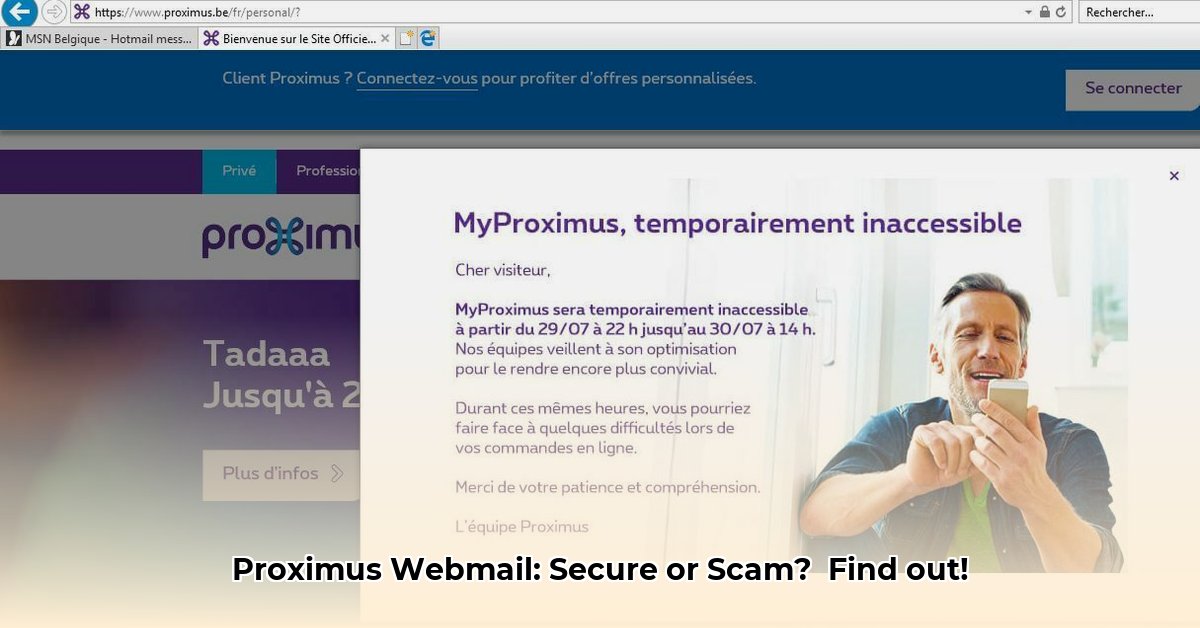
Is Proximus webmail a safe and private option for your emails? This in-depth review examines Proximus's security and privacy practices, comparing it to competitor Scarlet and assessing its compliance with GDPR. We'll unpack the technical aspects and offer practical recommendations.
Logging In and Security Measures: A Standard Approach?
Proximus webmail uses a standard username and password login system. While straightforward, this simplicity raises questions. Does Proximus offer additional security layers like two-factor authentication (2FA) (a system requiring multiple forms of verification for login)? The lack of readily available information regarding these crucial security measures is concerning. Aren't stronger security protocols essential in today's digital landscape?
Cookie Usage Transparency: Tracking Concerns
Proximus, like many online services, utilises cookies (small text files stored on your device that track your browsing activity). While acknowledging third-party involvement, the extent of their tracking practices and the level of user control remain unclear. How transparent is Proximus about which data is being collected? The absence of detailed explanations regarding data encryption, both in transit and at rest, also raises concerns about the data's safety. Isn't clear communication about data handling fundamental for building user trust?
Data Protection and GDPR Compliance: A Missing Piece?
A significant concern is the lack of explicit statements regarding Proximus’s compliance with the General Data Protection Regulation (GDPR), which is crucial for users in Europe. This omission creates uncertainty. What specific measures are in place to ensure user data is protected under GDPR? This lack of clarity needs addressing. Does Proximus understand the gravity of ensuring GDPR compliance and upholding its responsibilities in protecting user data under European law?
Proximus vs. Scarlet: A Belgian Email Showdown
While both Proximus and Scarlet present similar security and privacy concerns, Proximus offers slightly more transparency regarding its cookie usage. However, this minor improvement falls short of industry best practices. Both providers need to address the lack of detail on data handling and security infrastructure. How can these companies improve their transparency and meet the expectations of modern users?
Privacy-Focused Alternatives: Exploring Better Options
Many modern email providers prioritize user privacy, using advanced technologies to enhance security and transparency. Proximus and Scarlet could benefit from adopting similar practices, reflecting the evolving preferences of users who increasingly value privacy. How can Proximus leverage new privacy-enhancing technologies to improve its service and build user confidence?
Concerns and Recommendations: A Call for Action
The key concerns are a lack of transparency regarding security measures and data handling, and the absence of clear GDPR compliance statements. Recommendations include:
- Enhance Transparency: Proximus should publish detailed information on security protocols, encryption, and data handling practices. Independent audits can also strengthen user trust.
- Implement 2FA: Integrating two-factor authentication (2FA) would significantly improve account security.
- Clarify GDPR Compliance: A clear and concise statement of Proximus’s GDPR compliance is crucial. This should cover all aspects of data collection, processing, and storage.
- Explore Privacy-Enhancing Technologies: Investigate and adopt user-centric technologies that minimise data collection while preserving functionality.
The Verdict: A Cautious Approach
Proximus's webmail service provides basic functionality. However, the significant lack of transparency around security and privacy, particularly regarding GDPR compliance, is problematic. Users who prioritize strong security and robust privacy should weigh their options carefully and possibly consider well-established alternatives with clearer commitments to data protection. Proximus needs to address these shortcomings to secure user trust. What steps will Proximus take to improve user confidence in its commitment to data safety?